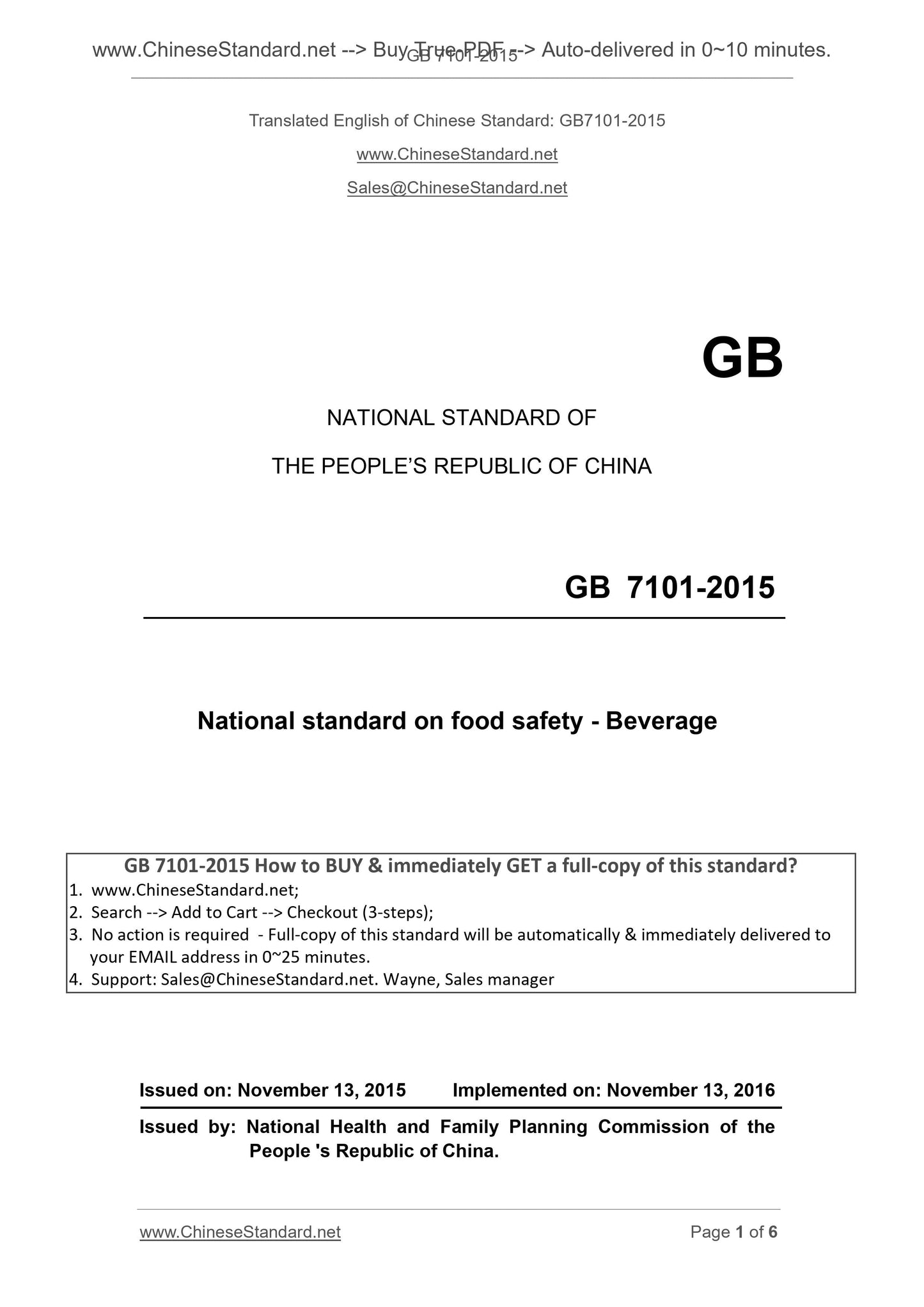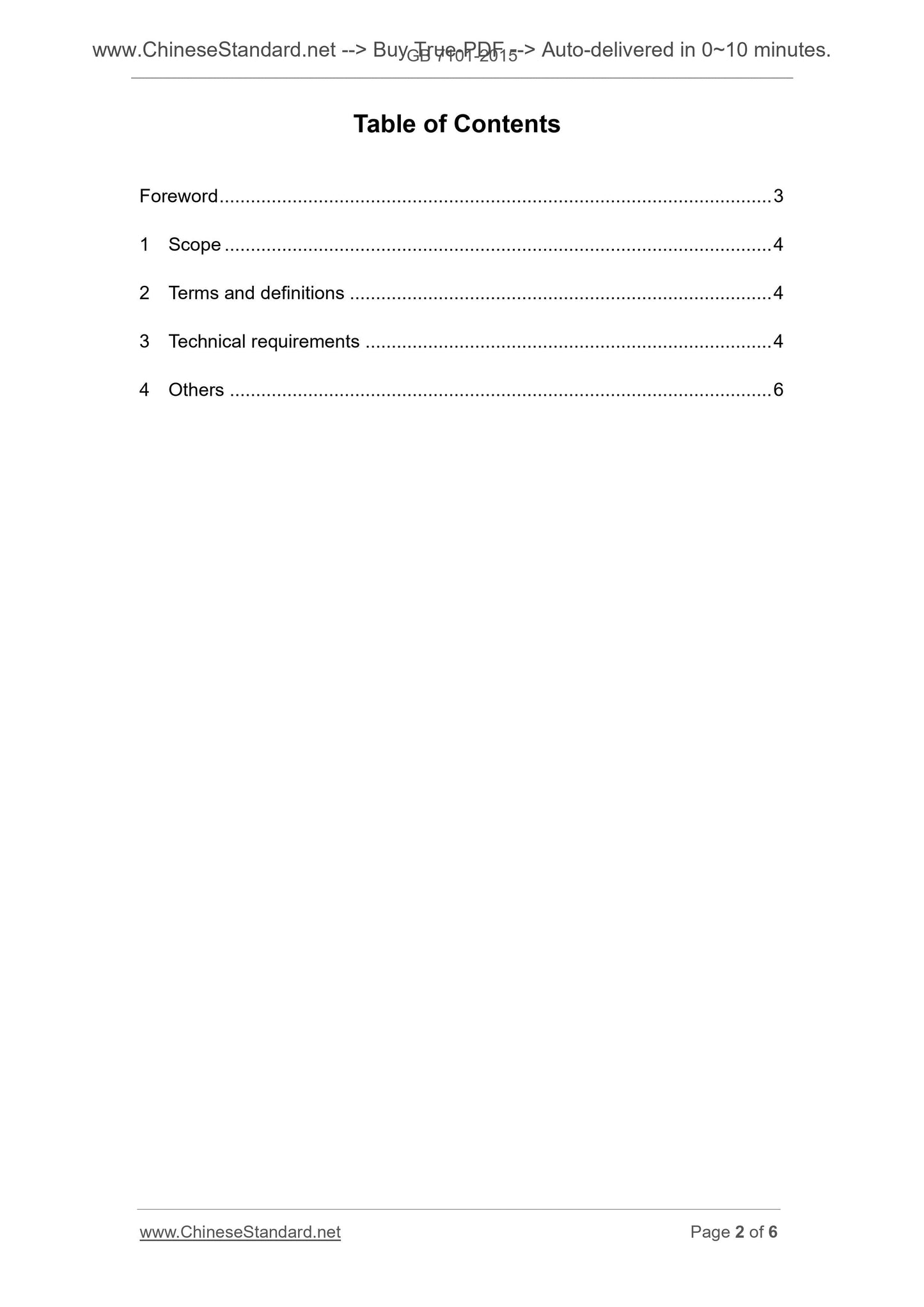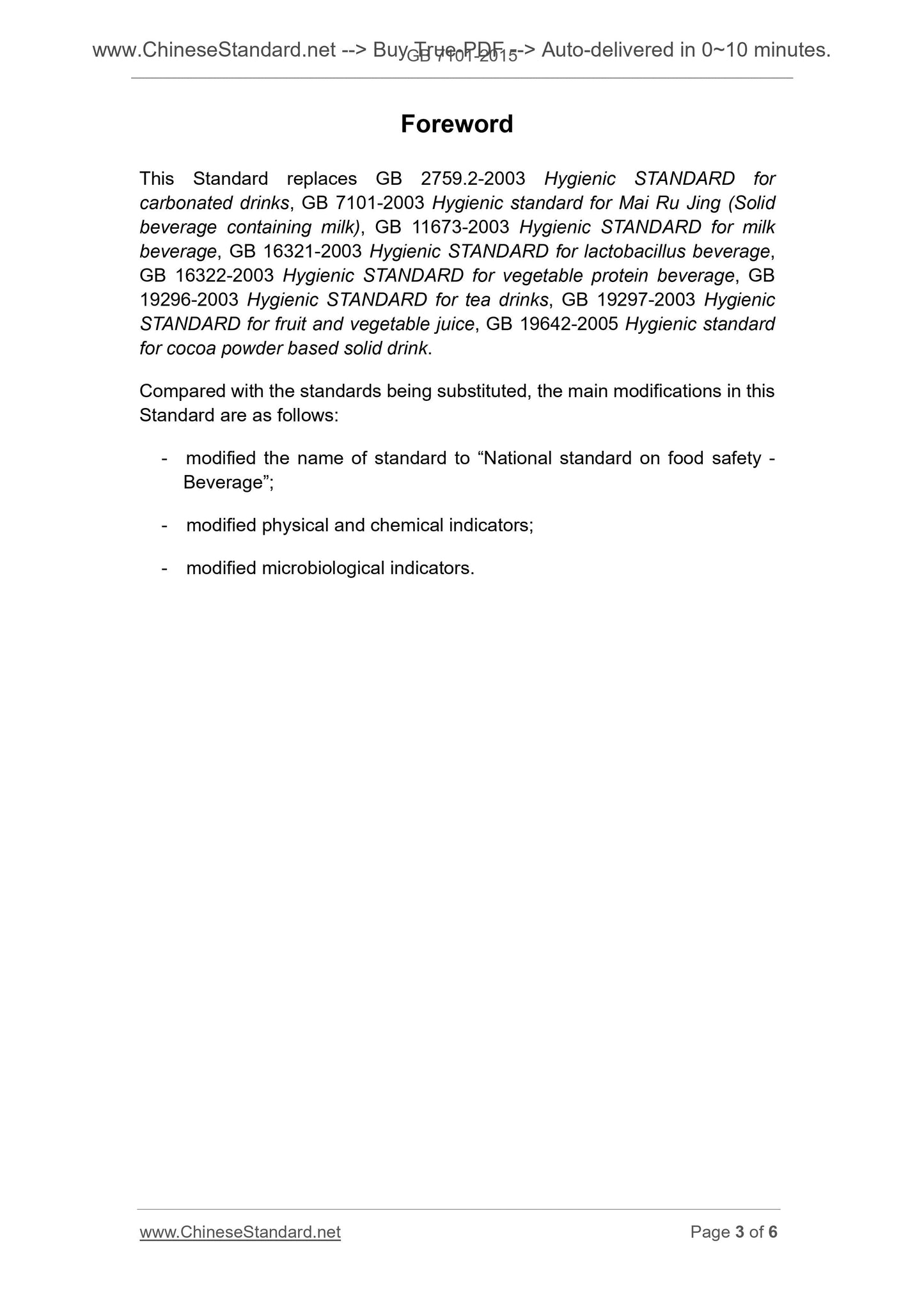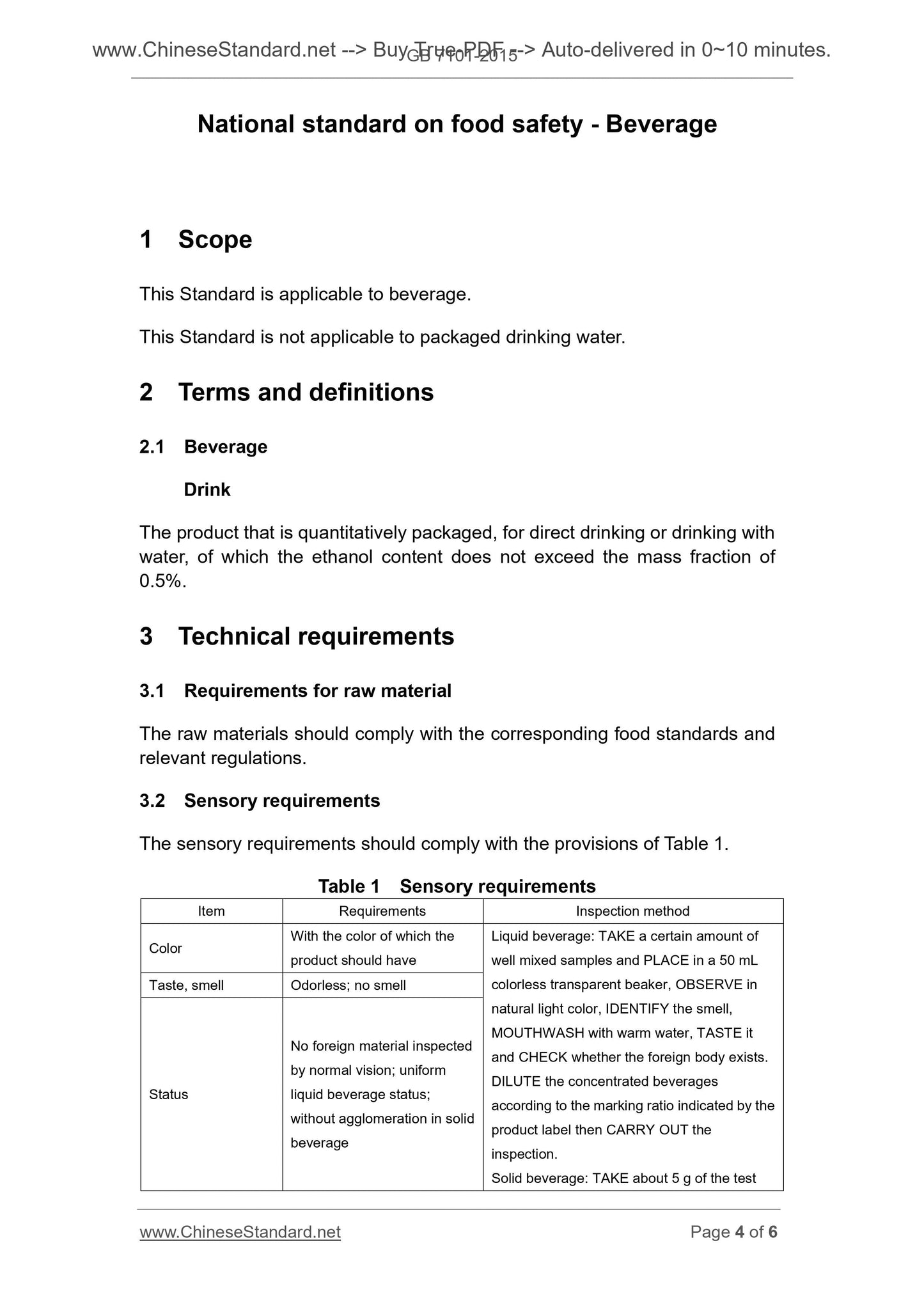1
/
of
4
PayPal, credit cards. Download editable-PDF & invoice in 1 second!
GB 7101-2015 English PDF
GB 7101-2015 English PDF
Regular price
$70.00
Regular price
Sale price
$70.00
Unit price
/
per
Shipping calculated at checkout.
Couldn't load pickup availability
GB 7101-2015: National standard on food safety -- Beverage
Delivery: 9 seconds. Download (and Email) true-PDF + Invoice.Get Quotation: Click GB 7101-2015 (Self-service in 1-minute)
Newer / historical versions: GB 7101-2015
Preview True-PDF
Scope
This Standard is applicable to beverage.This Standard is not applicable to packaged drinking water.
Basic Data
| Standard ID | GB 7101-2015 (GB7101-2015) |
| Description (Translated English) | National standard on food safety -- Beverage |
| Sector / Industry | National Standard |
| Classification of Chinese Standard | C53 |
| Classification of International Standard | 67.16 |
| Word Count Estimation | 6,698 |
| Date of Issue | 2015-11-13 |
| Date of Implementation | 2016-11-13 |
| Older Standard (superseded by this standard) | GB 2759.2-2003 |
| Regulation (derived from) | National Health and Family Planning Commission Announcement No |
| Issuing agency(ies) | National Health and Family Planning Commission of the People's Republic of China |
| Summary | This standard applies to beverages. This standard does not apply to packaged drinking water. |
Share







